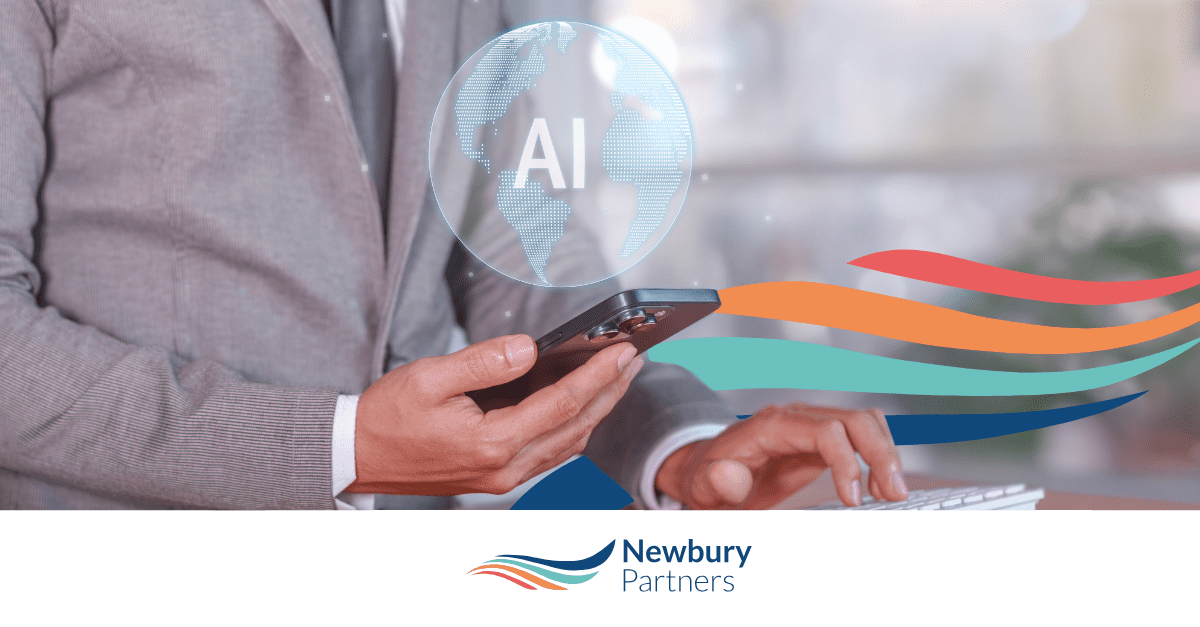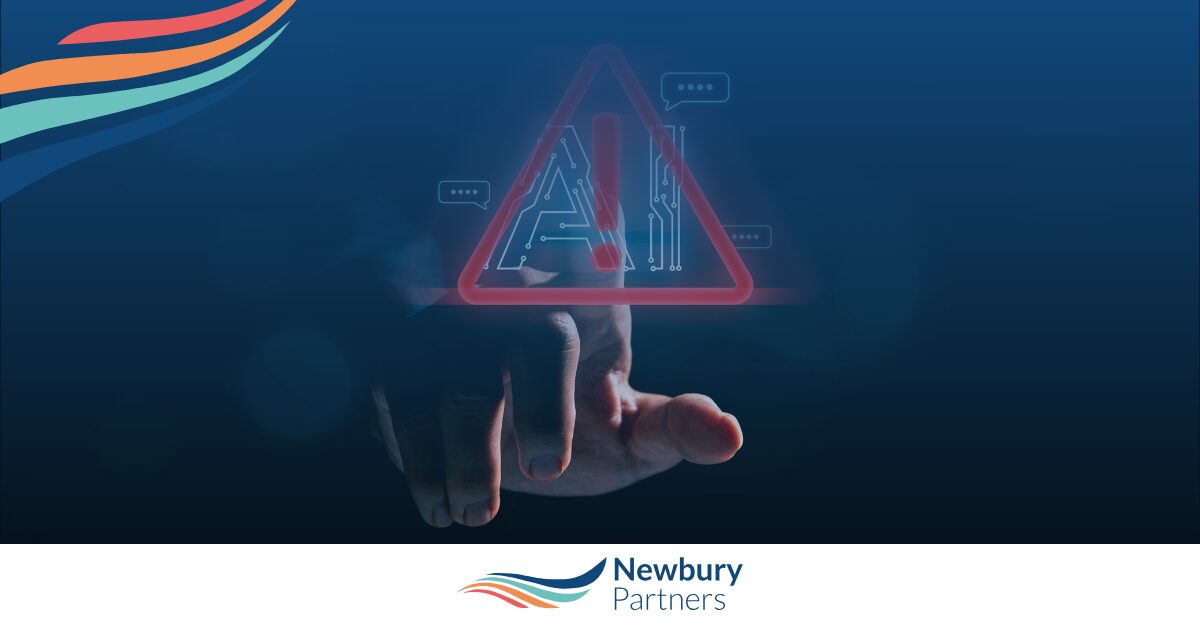You might be hearing about AI everywhere. Conference keynotes promise it will revolutionize your business. LinkedIn posts claim it’s the future of staffing. Your vendors pitch AI-powered features at every renewal meeting. Yet the AI opportunity for staffing firms feels about as tangible as winning the lottery – theoretically life-changing, but practically out of reach.
Here’s what makes this different from previous technological waves: the money is real, and it’s moving fast. While you’ve been trying to figure out what AI actually means for your staffing firm, a $5 trillion market transformation is already underway.
The question isn’t whether AI will reshape how staffing firms operate but whether you’ll be positioned to capture value from that shift or watch it flow to competitors who moved first.
A Look into the AI Market
Understanding the scale of what’s happening requires looking beyond the marketing noise to the actual capital deployment.
The $5 Trillion Reality
According to UN Trade and Development, the global AI market will surge from $189 billion in 2023 to $4.8 trillion by 2033. That represents a 25-fold increase in a single decade. By 2033, AI could quadruple its share of the global frontier technology market, rising from 7 percent to 29 percent and becoming the sector’s dominant force.1
This isn’t venture capital speculation. International Business Machines Institute for Business Value (IBM) also reports that organizations are now directing 64 percent of their AI budgets toward core business functions rather than experimental projects.2 Many companies have moved past the pilot phase into serious operational automation of their most critical processes.
Why This Time Is Different
Previous technology waves required you to convince employees to adopt new tools. This time, adoption is happening whether you lead it or not. According to Gallup, 40 percent of U.S. employees now use AI at work, nearly doubling from 21 percent just two years ago.3
This means your clients and candidates aren’t waiting for your permission to become AI-literate. They’re arriving with expectations shaped by AI-powered experiences in their daily work.
The acceleration means you face a choice: build AI capabilities now while you can still differentiate, or rush to catch up when AI-enabled competitors have already captured market share and client relationships.
Why Early Movers Win
The MySpace Lesson
MySpace launched first and dominated social networking from 2003 to 2008, reaching 100 million users before Facebook hit 50 million. But MySpace treated social networking as a publishing platform cluttered with ads and revenue experiments while Facebook built it as a clean connection engine.
When users had to choose between “Punch the Monkey” banner ads and native social experiences, Facebook’s superior execution won. By 2012, Facebook had 1 billion users while MySpace sold for $35 million.
This lesson applies directly to AI in staffing. Being the first to buy AI tools means nothing. Being first to integrate AI into recruiting workflows, candidate matching, and client service delivery creates sustainable competitive advantages that become harder to replicate as your processes mature.
Compound Advantages in Staffing Operations
AI advantages compound rapidly in high-volume, process-driven businesses like staffing:
- Efficiency multiplier effect: When your AI-powered candidate matching saves 30 minutes per placement, that efficiency gain multiplies across hundreds of placements per month
- Client retention advantage: Your faster time-to-fill becomes a differentiator that competitors still relying on manual processes can’t match
- Learning curve moats: Every placement teaches your AI system something new about successful matches, optimal timing, and candidate preferences – competitors starting later begin with inferior data and less refined algorithms
- Pricing flexibility: Your operational efficiency creates margin room to pressure-test competitors who haven’t automated their core processes
The Cost of Waiting
While you’re evaluating options, the window for competitive advantage is closing.
The BlackBerry Trap
BlackBerry dismissed the iPhone, insisting business users preferred physical keyboards over touchscreens. They focused on enterprise security while Apple captured the consumer market with apps and user experience.
By the time BlackBerry launched their touchscreen Storm in 2008, it was too late – the market had moved on. BlackBerry’s market share collapsed from dominance to irrelevance within five years. Staffing firms risk the same fate by dismissing AI as hype while others build operational advantages.
Margin Pressure Builds
As AI tools become accessible, some competitors will inevitably automate candidate screening, qualification calls, and compliance documentation. Those efficiency gains translate to lower operational costs, enabling more aggressive pricing on contracts. You’ll face pressure to match their bids without their cost structure – forcing choices between losing deals or accepting thinner margins.
Client Expectations Evolve
Your clients’ internal teams are adopting AI for sourcing, scheduling, and analytics. They’ll increasingly expect their staffing partners to deliver similar automation and insights. Manual processes that seem professional today risk appearing outdated within quarters. Client renewals become conversations about capability gaps rather than relationship value.
The Learning Curve Steepens
Starting AI implementation later means starting with less sophisticated tools, smaller datasets, and higher costs. Early adopters accumulate placement data that makes their AI smarter over time. The longer you wait, the wider this capability gap becomes and the more expensive it gets to close.
Ready to Capture Your Share of the $5 Trillion AI Opportunity?
The AI Collective brings together staffing executives facing the same challenge: turning AI potential into operational results. Through strategic roundtables and hands-on coaching, Newbury Partners helps staffing leaders build the AI capabilities that create lasting competitive advantages rather than expensive experiments. Join the AI Collective to unlock your share of the $5 trillion AI opportunity.
References
1. AI market projected to hit $4.8 trillion by 2033, emerging as dominant frontier technology. (2025, April 7). UNCTAD. https://unctad.org/news/ai-market-projected-hit-48-trillion-2033-emerging-dominant-frontier-technology
2. Blair, K., Brenna, F., Fuller, N., Goehring, B., & Sanchez, M. (2025, June 9). From AI projects to profits: How agentic AI can sustain financial returns. International Business Machines Institute for Business Value. https://www.ibm.com/thought-leadership/institute-business-value/en-us/report/agentic-ai-profits
3. Pendell, R. (2025, June 15). AI use at work has nearly doubled in two years. Gallup Workplace. https://www.gallup.com/workplace/691643/work-nearly-doubled-two-years.aspx



